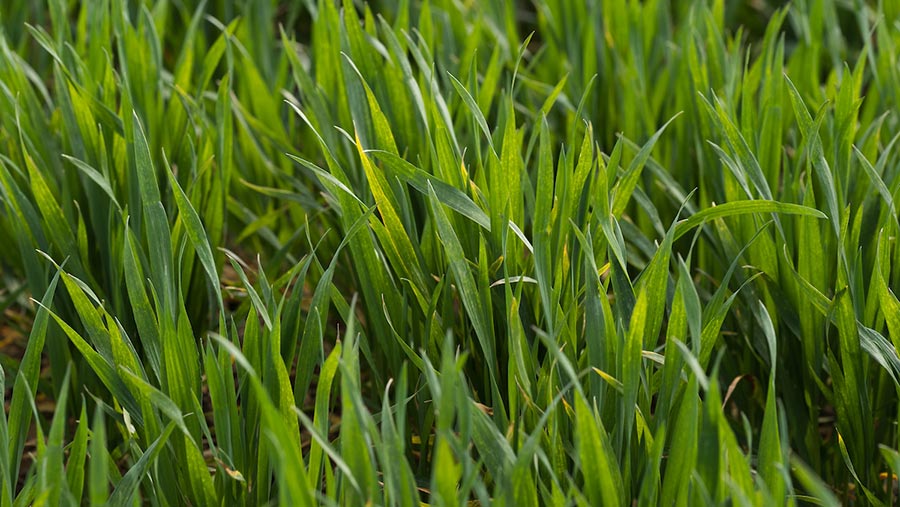Analysis: Why is wheat price static and when will it move?
 © Tim Scrivener
© Tim Scrivener Dry weather is having a diverse impact on Europe’s cereal crops with some suffering from the lack of rain, while others have benefited from earlier sowing, leaving UK farmers wondering whether to commit crops forward now or wait in expectation of high prices.
Beyond Brexit uncertainty, the main factor occupying traders thoughts are the crop conditions in the ground, both in the UK and the continent, as this will determine crop size and have a significant bearing on price.
Mediterranean countries including Spain, Portugal and Morocco are among those finding conditions tough in extreme dry weather and unusually high seasonal temperatures.
See also: Analysis: Which way will wheat prices go by June?
World Meteorological Organisation data show Spain’s rainfall at about 50% of the norm and only 30% compared with last year’s figure.
AHDB senior analyst James Webster said that the situation was being made worse by low levels of surface and subsurface soil moisture.
Despite a recent downpour, moisture levels are well below 2018 figures. With only light rainfall forecast over the next two weeks, more will be required to fully ease concerns, Mr Webster said.
For the UK, challenges to Spanish and Portuguese crops have historically resulted in increased UK exports to the region, according to AHDB figures.
Dryness in the region in 2015/16 saw the UK export 709,000t of wheat to the two countries compared to the five-year average of about 331,000t.
Wheat growing areas in southern France are also appear to be affected.
France extremely dry
CRM Agricommodities director Benjamin Bodart reported that conditions on his family farm in the south west of France were extremely dry.
“We began irrigating in March which we have not done since we started to farm in the region in the 1980s,” Mr Bodart said.
He added that there was no rain in the forecast in the near future so the effect of the weather may soon begin to exert some upward pressure on prices between now and July.
However, that same dry weather has helped improve growing conditions in other major exporting regions.
In Russia alone, estimates suggest there has been a 4% increase in winter wheat plantings with a further rise in the spring crop area.
Ukraine-based analysts UkrAgroConsult, have suggested that the Russian spring wheat area covers 12.2m ha, a rise of 1.7% on the 2018 figures.
It suggested Russian production levels could be up by 9% to as much as 78.6m tonnes this season.
AHDB calculations put the figure lower at 75.2mt, however, this would still represent the second highest yield since 2010/11 and if realised, potentially putting downward pressure on markets.
UK crops better than average
In the UK, the mild winter and favourable spring conditions have left autumn-sown crops looking better than ever, according to grain consultant Richard Whitlock.
“It is the same for early-sown spring crops that went in during February and early March which are growing away nicely,” Mr Whitlock said.
But, the situation is not quite as good for others.
“Late-sown spring crops in the UK are starting to need moisture and the next four to six weeks could be pivotal, if the rain continues to hold off,” Mr Whitlock said.
The weather was just one of a number of unknowns which had seen trade treading water.
As of Thursday morning (11 April) old crop wheat futures for May 2019 were unchanged at £164.45/t while November new crop was £146.50/t.
Brexit uncertainty
Traders have been waiting to see which direction Brexit negotiations would take because of the huge implications that any tariffs would make to UK grain prices, Mr Whitlock said.
In a no deal situation, tariffs on UK wheat could be as high as €90/t (£78/t) or lower at €12/t (10/t) for crop sold under a tariff –rate quota, he explained.
Aside from Brexit and the weather, high levels of stocks in the US have added to uncertainty over supplies hitting the market.
“The tariff battle with China that started with soybean has seen the US holding an unusually high levels of wheat stocks.”
This has been influenced further by a decrease in wheat consumption in the US and buyers switching to the flow of cheap maize.
In the UK we are also seeing some imports of German breadmaking wheat and July contracts for French wheat from areas like Bordeaux which are holding prices back, Mr Whitlock added.
Summing up the state of the market Mr Whitlock said that this was always a period of annual uncertainty because of the growing crop but the extra influences made it more difficult to make firm forecasts than usual.
“In uncertain times prices usually tend to drift downwards,” he added.
